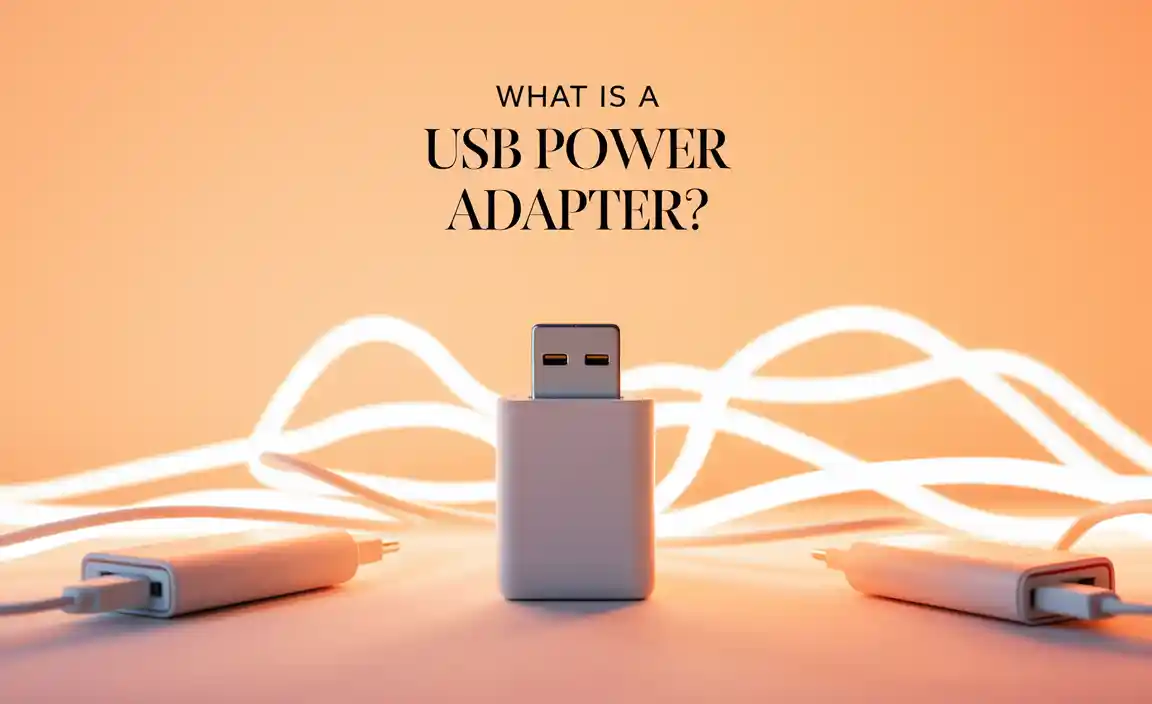Get reliable car power this winter without breaking the bank. A cheap gel car battery offers excellent cold-weather performance and longevity, making it a smart choice for drivers facing harsh conditions. This guide shows you how to find and maintain one for worry-free driving all season long.
Winter can be tough on your car, and the battery is often the first to feel the chill. A dead battery on a freezing morning is more than an inconvenience; it can leave you stranded. Many drivers worry about the cost of a quality battery, especially when they need one that can handle cold temperatures. But what if you could get reliable winter power without spending a fortune? That’s where a cheap gel car battery comes in. These batteries are built tough for cold weather and offer great value. In this guide, we’ll walk you through why gel batteries are a smart winter choice, how to pick an affordable one that’s right for you, and simple tips to keep it running strong, ensuring you have the essential power you need when you need it most.
Why a Gel Car Battery is Your Winter Winner
When the temperatures drop, your car’s battery has to work harder. Engine oil gets thicker, making it harder to crank the engine, and the chemical reactions inside the battery slow down. This means a weaker battery can struggle, or even fail, when you expect it to perform. You might have heard of different types of car batteries, like lead-acid or AGM. Gel batteries, a type of sealed lead-acid battery, have unique advantages, especially for winter driving.
The Gel Advantage: How It Works
Unlike traditional liquid-electrolyte batteries, gel batteries use a silica-based gel to suspend the electrolyte. This design offers several benefits:
- Spill-Proof Design: The gel electrolyte is less likely to leak, even if the battery is tilted or damaged. This makes them safer and easier to handle.
- Deep Discharge Recovery: Gel batteries are known for their ability to withstand deep discharges better than many other types. This means they can recover better if they are fully drained.
- Vibration Resistance: The semi-solid electrolyte provides good protection against vibrations, which can be a problem on rough winter roads.
- Temperature Tolerance: Gel batteries generally perform well in a wider range of temperatures, including the cold. While no battery likes extreme cold, gel technology offers better stability.
Cold Cranking Amps (CCA): The Key to Winter Starts
When looking for a winter battery, the most important number is its Cold Cranking Amps (CCA) rating. This measures how much power the battery can deliver for starting an engine in freezing temperatures (0°F or -18°C). The higher the CCA, the better the battery’s ability to start your car in the cold.
Consider checking what your car manufacturer recommends for CCA. You can usually find this in your car’s owner’s manual or on a sticker under the hood. For winter, it’s often a good idea to choose a battery with a CCA rating that meets or slightly exceeds the minimum requirement for your vehicle.
Finding a Cheap Gel Car Battery: Smart Shopping Tips
The word “cheap” doesn’t have to mean “low quality.” With a little know-how, you can find affordable gel car batteries that deliver reliable performance. Here’s how to shop smart:
1. Know Your Battery Group Size
Car batteries come in different physical sizes and terminal configurations, known as group sizes. Using the wrong size can lead to installation problems or poor connections. The most common group sizes include BCI (Battery Council International) sizes like 24, 35, 51R, and many others.
To find your car’s required battery group size:
- Check your owner’s manual: This is the most reliable source.
- Look at your old battery: The group size is usually printed on the label.
- Use online fitment guides: Most auto parts stores have websites that let you enter your car’s make, model, and year to find compatible batteries.
2. Compare Prices and Brands
Don’t settle for the first battery you see. Prices can vary significantly between brands and retailers. Affordable gel batteries can be found from:
- Major Auto Parts Chains: Brands like Duralast (AutoZone), DieHard (Advance Auto Parts), and EverStart (Walmart) often have budget-friendly options. They also offer convenience and easy returns.
- Warehouse Clubs: Costco and Sam’s Club sometimes carry re-branded batteries at competitive prices.
- Independent Retailers: Local battery shops or smaller auto parts stores might have deals, especially on less common brands.
When comparing, look for batteries with a decent warranty. Even a budget battery should come with at least a 1-year free replacement warranty. A longer warranty (2-3 years) is even better and can signal better build quality.
3. Look for Sales and Discounts
Keep an eye out for seasonal sales. Many auto parts stores have promotions around holidays or during the late fall and early winter months to prepare drivers for the cold. Signing up for email newsletters from your favorite auto parts stores can also alert you to upcoming discounts.
4. Consider Refurbished or “Take-Off” Batteries (Use Caution)
In some cases, you might find a “refurbished” or “take-off” battery. These are often used batteries that have been tested and possibly repaired. While they can be significantly cheaper, they come with higher risk. They might have a shorter lifespan and a limited or no warranty. If you go this route, ensure you buy from a reputable source that offers some guarantee.
Installation Basics: A DIY Approach
Replacing a car battery is a task many DIYers can handle, saving you labor costs. However, safety is paramount. Always follow these precautions:
Tools You’ll Need
- Wrench set or socket set (typically 10mm, 13mm, and possibly 1/2 inch or 9/16 inch)
- Battery terminal cleaner brush or wire brush
- Gloves and eye protection
- Safety rags or paper towels
- Optional: Anti-corrosion spray or felt washers
Step-by-Step Installation Guide
Before you start, ensure your car is turned off and the keys are out of the ignition. Park on a level surface.
- Disconnect the Negative Terminal First: Using your wrench, loosen the nut on the black (negative, “-“) terminal clamp. Gently twist and pull the cable off the battery post. Tuck it away so it can’t accidentally touch the battery post.
- Disconnect the Positive Terminal: Loosen and remove the red (positive, “+”) terminal clamp. This terminal may have a plastic cover; remove it first.
- Remove the Battery Hold-Down: Most batteries are secured by a bracket or clamp at the base or top. Locate and remove the bolts or nuts holding it in place.
- Lift Out the Old Battery: Batteries are heavy! Lift with your legs, not your back. If it’s too heavy, ask for help.
- Clean the Battery Tray and Cables: Use a brush to clean any corrosion from the battery tray and the inside of the terminal clamps. A clean connection is crucial for good electrical flow.
- Place the New Battery: Carefully set the new gel battery into the tray, making sure it’s oriented correctly (positive and negative terminals in the right position).
- Secure the Hold-Down: Reinstall and tighten the battery hold-down bracket.
- Connect the Positive Terminal First: Place the red (positive, “+”) cable clamp onto the battery post and tighten the nut securely.
- Connect the Negative Terminal: Place the black (negative, “-“) cable clamp onto the battery post and tighten the nut.
- Apply Anti-Corrosion (Optional): Spray a bit of terminal protector or place felt washers on the posts to prevent future corrosion.
- Double-Check Connections: Ensure both terminals are snug and won’t wobble.
- Start the Car: Turn the ignition and start your engine.
Safety Note: All car batteries contain sulfuric acid and can produce flammable hydrogen gas. Always wear safety glasses and gloves, work in a well-ventilated area, and avoid sparks or open flames near the battery. If you’re unsure about any step, consult a qualified mechanic. For more detailed safety information, the National Highway Traffic Safety Administration (NHTSA) offers helpful resources on vehicle maintenance.
Gel Battery Maintenance for Winter Longevity
Even a cheap gel car battery can last longer and perform better with a little care, especially when facing winter’s demands.
Keep It Clean
Corrosion on the battery terminals can impede electrical flow and weaken the battery’s performance. Regularly inspect the terminals. If you see a white or bluish powdery substance, clean it off using a wire brush and a mixture of baking soda and water. Rinse with clean water and dry thoroughly. Applying a thin layer of dielectric grease or battery terminal protector can help prevent future corrosion.
Check and Tighten Connections
Loose battery terminals are a common cause of starting problems. Periodically check that the clamps are tight on the battery posts. A loose connection can prevent the battery from delivering full power or even charging properly.
Protect from Extreme Cold
While gel batteries are better suited for cold than traditional flooded batteries, prolonged exposure to extreme cold when the car is off can still reduce their effectiveness. If your car will be parked for an extended period in very cold weather, consider parking it in a garage if possible. Keeping the car plugged into a block heater in extremely cold climates can also reduce the strain on the battery when starting.
Avoid Frequent Short Trips
Short drives don’t give the alternator enough time to fully recharge the battery. If you mainly make short local trips in winter, your battery may not be getting enough charge, weakening it over time. Try to take your car for a longer drive (at least 20-30 minutes) once a week to ensure it gets a sufficient charge.
Consider a Battery Tender When Storing
If you store your vehicle for the winter or for extended periods, a battery tender (also known as a trickle charger) is an excellent investment. These small devices maintain a surface charge on the battery, preventing it from discharging excessively and prolonging its life. They are designed to not overcharge the battery. You can find reliable battery tenders for under $50.
Gel vs. Other Battery Types for Winter
It’s helpful to see how gel batteries stack up against other common types when winter hits.
| Feature | Gel Battery | AGM (Absorbent Glass Mat) Battery | Flooded Lead-Acid Battery (Standard) |
|---|---|---|---|
| Cold Performance (CCA) | Good to Excellent | Excellent | Fair to Good |
| Spill/Leak Risk | Very Low | Very Low | High (if tipped or damaged) |
| Deep Discharge Tolerance | Good | Very Good | Fair (can be damaged by deep discharge) |
| Vibration Resistance | Good | Excellent | Fair |
| Cost (Generally) | Mid-Range | Higher | Lowest |
| Maintenance | Low (sealed) | Low (sealed) | Can require checking electrolyte levels |
While AGM batteries often offer superior cold-weather performance and vibration resistance, gel batteries provide an excellent middle ground. They are more robust than standard flooded batteries and typically more affordable than AGMs, making them a fantastic “cheap gel car battery for winter” solution when budget is a key concern, without overly compromising on performance.
When to Consider Replacing Your Car Battery
Even with proper care, car batteries don’t last forever. Most car batteries last between 3 to 5 years. If you notice any of these signs, it might be time to consider a replacement, especially before winter truly sets in:
- Slow Engine Crank: The engine takes longer to turn over when you start the car.
- Dim Headlights: Headlights seem less bright, especially when the engine is idling.
- Warning Light: The battery warning light or check engine light on your dashboard comes on.
- Corrosion: Significant corrosion builds up on the battery terminals.
- Swollen Case: The battery case appears swollen or bloated, which can indicate internal damage or overcharging.
- Age: If your battery is already 3-4 years old or more, it’s a good idea to get it tested, even if you haven’t noticed problems. Many auto parts stores offer free battery testing.
Proactive replacement can save you from being stranded. Testing your battery before the cold weather hits is a smart move. Many service centers (like AAA) offer free battery testing services.
Frequently Asked Questions (FAQs)
Q1: What does “cheap gel car battery for winter” mean?
It means finding a gel-type car battery that is affordable and offers good performance in cold weather. Gel batteries are known for their reliability in snow and ice, and a “cheap” option provides this essential winter power without a hefty price tag.
Q2: How long do gel car batteries typically last?
A well-maintained gel car battery can last anywhere from 3 to 5 years, sometimes even longer. Their sealed design and durable electrolyte make them quite resilient.
Q3: Can I use a gel battery in any car?
Yes, as long as it’s the correct group size and has the appropriate Cold Cranking Amps (CCA) for your vehicle. Always check your car’s manual or an online fitment guide.
Q4: Are gel batteries better than regular car batteries for winter?
Generally, yes. Their design makes them more resistant to the cold and less prone to damage from vibrations or spills, which are common winter driving concerns. They typically offer better CCA performance in frigid temperatures than standard flooded lead-acid batteries.





